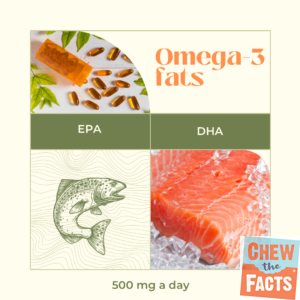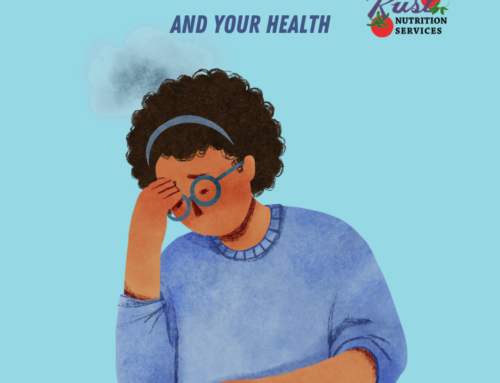Have you heard of omega-3 fatty acids? You may have. And you might know that fatty fish is a great food source for them.
But did you know that Omega-3s include three types of fatty acids: ALA, EPA, and DHA. I recently attended an educational session sponsored by Global Organization for EPA and DHA.
GOED represents the worldwide EPA and DHA omega-3 industry. Their mission is to increase consumption of EPA and DHA omega-3s and ensure quality supplement products are produced that consumers can trust. As an organization they track and share the research that backs the importance of including EPA and DHA in the diet.

Simple Ways to Get Your Omega-3 Fats
From a dietary perspective, there are two types of fats, saturated fats and unsaturated fats. For heart, brain and gut health, you want to limit the intake of saturated fats in the diet. Butter, fatty meats, poultry skin, full-fat dairy, and coconut oil are examples of saturated fat. Unsaturated fats include monounsaturated (olive, peanut and avocado oils) and polyunsaturated fats (soybean, canola and corn oils).
Omega-3 fatty acids are a group of essential polyunsaturated fatty acids. However the body does not produce these essential fats. Therefore, you have to get them from food. ALA is found in plants (flax seeds, walnuts, canola & soybean oils). EPA and DHA is found in fatty fish and some types of algae. Most people don’t get enough EPA & DHA. These fatty acids support your heart, a healthy your eyes, your brain, and support a healthy pregnancy. It may be prudent to consider an EPA-DHA omega-3 supplement because there is strong research showing that they have health benefits.
Dietary Patterns
DASH, Mediterranean, and MIND dietary patterns are the best food plans for heart and brain health. They all include a healthy dose of Omega-3s (MIND diet is a combination of a Mediterranean style and DASH diet plans).
How can you add Omega-3 fats into these diet plans and healthy food pattern?
- Include fatty fish in your diet. This includes fresh (or frozen) salmon and tuna, but it also includes canned fish such as sardines, tuna or salmon. With food prices sky high, I suggest you try canned salmon or tuna as an affordable (and zero-waste) way to add omega-3 fats into your week (for a quick recipe, check out my Lemony Salmon Cakes from Zero Waste Cooking For Dummies®).
- GOED recommends 500 milligrams of EPA + DHA per day. A 6-ounce salmon filet provides about 1800 milligrams (farmed is often higher), 2 ounces sardines provide around 550 milligrams. The omega-3s in canned tuna vary pretty widely. A 3-ounce portion may provide anywhere from 65 to 250 mg of EPA + DHA.
- For people concerned about their heart, brain and eye health, it may be prudent to consider a daily fish oil supplement, in addition to the DHA and EPA coming from the diet.




